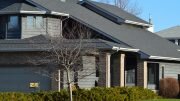Common misunderstanding about DAB coverage
– Many do not know that there are two national DAB transmitter network, and that there is a difference in the coverage between the two networks, says Ole Jørgen Torvmark.
P4, Radio Norway and NRK currently have auxiliary teams on the road in the five counties NRK will close down their FM senders on June 21st. The teams control coverage, help listeners and visit dealers and car dealerships.
– The teams every day experience that many do not know that the commercial channels and NRK each have their own DAB transmission networks and that there is a difference in coverage between the two networks, says Ole Jørgen Torvmark. Torvmark is Managing Director of Digital Radio Norway.
NRK’s DAB transmission network covers at least 99.7 percent of the population. The national block, ie the DAB transmission network for the commercial channels, covers 92.8 percent.
South west Norway loses FM on June 21
DAB channels have different coverage because they are sent via two different transmission networks. NRK’s radio network covers 99.7 percent of the population while commercial radio covers 92.8 percent.
– Some conclude that “there is no coverage for DAB”, where there in fact is coverage for NRK’s channels, says Torvmark.
The coverage map on radio.no/coverage shows coverage for the two DAB networks.
In the white paper “Digitization of the radio medium” (2011), the authorities demanded that NRK’s DAB broadcasting network must cover 99.5 percent of the population, and that the commercial network must cover 90 percent.
NRK will discontinue FM broadcasts in East and West Agder, Rogaland, Hordaland and Sogn og Fjordane on Wednesday June 21.
Digital audio broadcasting (DAB), Wikipedia
Digital audio broadcasting (DAB) is a digital radio standard for broadcasting digital audio radio services, used in several countries across Europe and Asia Pacific.
The DAB standard was initiated as a European research project in the 1980s. The Norwegian Broadcasting Corporation (NRK) launched the first DAB channel in the world on 1 June 1995 (NRK Klassisk), and the BBC and Swedish Radio (SR) launched their first DAB digital radio broadcasts in September 1995. DAB receivers have been available in many countries since the end of the 1990s.
DAB may offer more radio programmes over a specific spectrum than analogue FM radio. DAB is more robust with regard to noise and multipath fading for mobile listening, since DAB reception quality first degrades rapidly when the signal strength falls below a critical threshold, whereas FM reception quality degrades slowly with the decreasing signal.
Audio quality varies depending on the bitrate used and audio material. Most stations use a bit rate of 128 kbit/s or less with the MP2 audio codec, which requires 160 kbit/s to achieve perceived FM quality. 128 kbit/s gives better dynamic range or signal-to-noise ratio than FM radio, but a more smeared stereo image, and an upper cut-off frequency of 14 kHz, corresponding to 15 kHz of FM radio. However, “CD quality” sound with MP2 is possible “with 256…192 kbps”.
An upgraded version of the system was released in February 2007, which is called DAB+. DAB is not forward compatible with DAB+, which means that DAB-only receivers are not able to receive DAB+ broadcasts.However, broadcasters can mix DAB and DAB+ programs inside the same transmission and so make a progressive transition to DAB+. DAB+ is approximately twice as efficient as DAB, and more robust.
In spectrum management, the bands that are allocated for public DAB services, are abbreviated with T-DAB, where the “T” stands for terrestrial.
More than 30 countries provide DAB transmissions, and several countries, such as Norway, UK, Australia, Italy, Malta, Switzerland, The Netherlands and Germany,are transmitting DAB+ stations. In many countries it is expected that DAB will gradually replace FM radio. Norway was the first country to announce national FM radio analog switch-off starting from 2017.
© Radio.no / Norway Today



